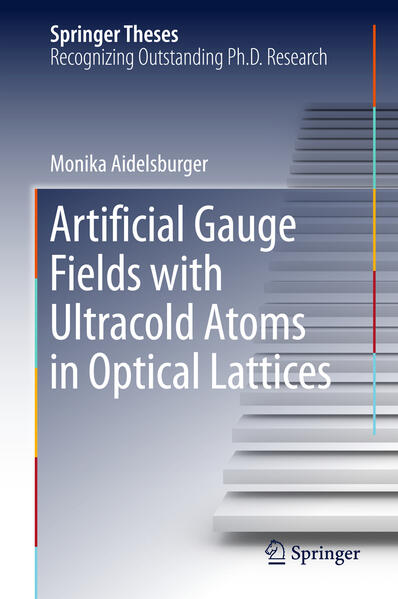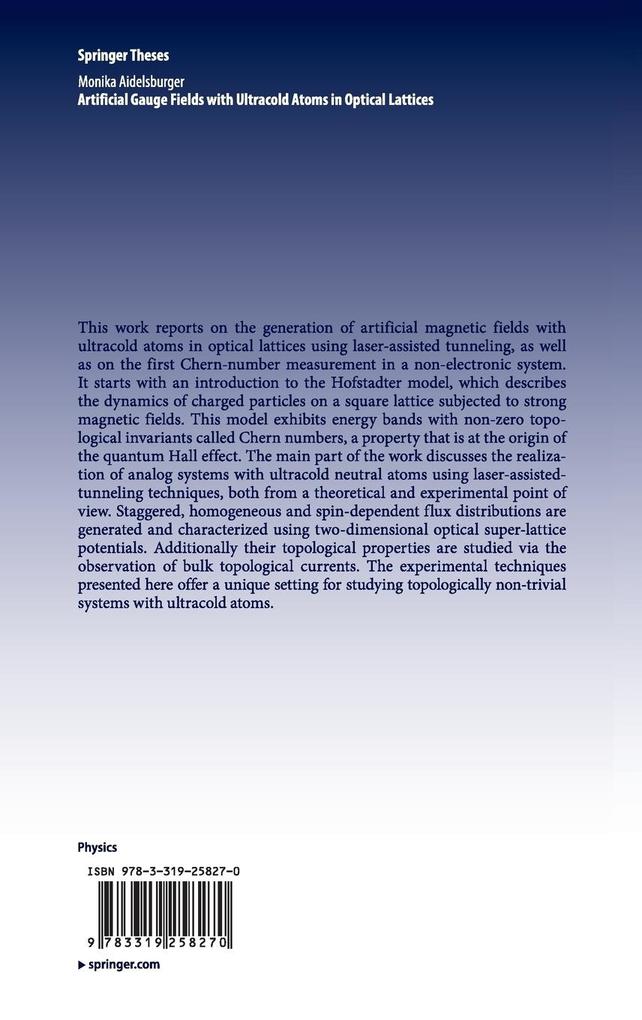
Zustellung: Fr, 30.05. - Di, 03.06.
Versand in 1-2 Wochen
VersandkostenfreiBestellen & in Filiale abholen:
This work reports on the generation of artificial magnetic fields with ultracold atoms in optical lattices using laser-assisted tunneling, as well as on the first Chern-number measurement in a non-electronic system.
It starts with an introduction to the Hofstadter model, which describes the dynamics of charged particles on a square lattice subjected to strong magnetic fields. This model exhibits energy bands with non-zero topological invariants called Chern numbers, a property that is at the origin of the quantum Hall effect. The main part of the work discusses the realization of analog systems with ultracold neutral atoms using laser-assisted-tunneling techniques both from a theoretical and experimental point of view. Staggered, homogeneous and spin-dependent flux distributions are generated and characterized using two-dimensional optical super-lattice potentials. Additionally their topological properties are studied via the observation of bulk topological currents.
The experimental techniques presented here offer a unique setting for studying topologically non-trivial systems with ultracold atoms.Inhaltsverzeichnis
Introduction. - Square Lattice with Magnetic field. - Artificial Gauge Fields with Laser-Assisted Tunneling. - Overview of the Experimental Setup and Measurement Techniques. - Staggered Magnetic Flux. - Harper-Hofstadter Model and Spin Hall Effect. - All-Optical Setup for Flux Rectification. - Chern-Number Measurement of Hofstadter Bands. - Conclusions and Outlook.
Produktdetails
Erscheinungsdatum
22. Dezember 2015
Sprache
englisch
Auflage
1st edition 2016
Seitenanzahl
188
Autor/Autorin
Monika Aidelsburger
Verlag/Hersteller
Produktart
gebunden
Abbildungen
XIII, 172 p. 76 illus., 2 illus. in color.
Gewicht
453 g
Größe (L/B/H)
241/160/16 mm
ISBN
9783319258270
Entdecken Sie mehr
Bewertungen
0 Bewertungen
Es wurden noch keine Bewertungen abgegeben. Schreiben Sie die erste Bewertung zu "Artificial Gauge Fields with Ultracold Atoms in Optical Lattices" und helfen Sie damit anderen bei der Kaufentscheidung.











